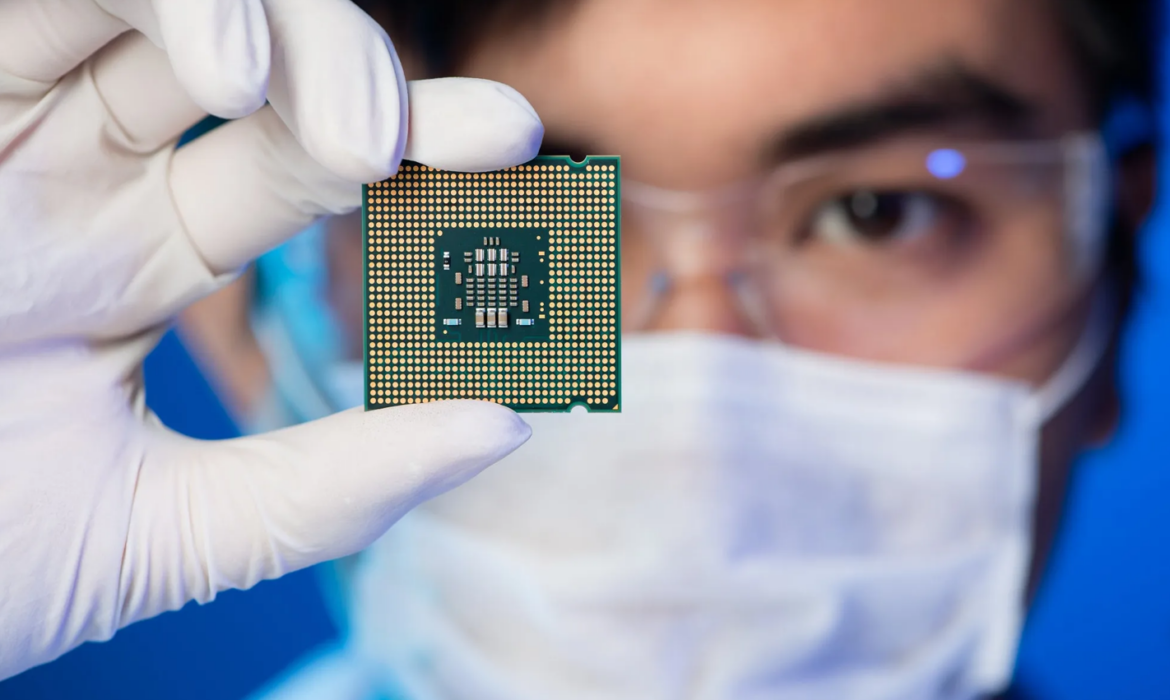
According to Associate Prof Dr Nguyen Duc Minh from the Hanoi University of Science and Technology (HUST), jobs in the semiconductor industry can be classified in four groups.
The first group is ‘designing and R&D’. Its major tasks include designing, simulating, verifying analog-digital electronic circuits; supporting tools and developing design process; researching and developing materials, and structuring components.
The group needs bachelor’s degree holders in electronics and telecommunications, electrical engineering and electronics; master’s degree holders in microchip designing, and doctorate holders in semiconductor and microchip designing.
The second group is ‘production’, which is in charge of managing the implementation of wafer and chip production process. The group needs bachelor’s, master’s and doctorate degree holders in electrical engineering, electronics, materials, physical engineering, microelectronic engineering and nano technology and chemistry.
The third one is ‘packaging and testing’ which is in charge of testing chips, quality assurance of materials, the elements in packaging and testing. Bachelor’s, master’s degree and doctorate holders majoring in related fields.
The fourth one is ‘support in application’, which takes responsibility for supporting the development of apps using chips. Bachelor’s degree holders in electronics-telecommunications, electrical engineering and electronics, computer engineering will be needed for these works.
Vietnam now has 40-50 microchip designing companies with 5,000 design engineers. It is estimated that the workforce demand in the segment would increase by 10-15 percent annually, mostly for designing and testing.
Vietnam has become the destination of many foreign investors in the field of semiconductor manufacturing. Amkor Technology Vietnam with the investment capital of $1.6 billion, Hana Micron Vina with $600 million now and $1 billion by 2025, and Intel Vietnam with over $1 billion, are some of them. Samsung said it will invest $3.3 billion more to manufacture semiconductor components in Vietnam.
It is expected that Vietnam’s semiconductor industry’s value would exceed $6.16 billion by 2024, and the industry would need 10,000 engineers a year.
In the digital era, when the world becomes flat, job opportunities for Vietnamese not only come from the domestic market, but also many foreign markets.
Deloitte estimated that over 2 million workers are working directly in the semiconductor industry, and the figure would increase by 1 million workers by 2030 globally.
Minh cited some reports as saying that in the next 10 years, Japan would need 35,000 more workers, South Korea 30,000, and Taiwan (China), which had 290,000 workers in the field in 2022, plans to need 34,000 more workers, while SIA (the Semiconductor Industry Association) estimated that there would be 420,000 new workforce by 2027.
Training is key to semiconductor industry development
Minh pointed out the strong points of HUST and other training establishments in Vietnam.
“We conduct training and research in all stages of the industry, from designing, manufacturing, production, to application development,” he said.
“Some training establishments, including HUST, Hanoi National University and HCM City National University, have well-equipped laboratories. The current training curriculums in some majors, including electronics-telecommunications, electrical engineering-electronics, physical engineering, microelectronic engineering and nano technology can basically meet the requirements in quantity and quality (fundamental knowledge) for semiconductor and microchip engineers at Vietnam’s and the world’s companies,” he added.
Minh cited the statistics of the Vietnamese microchip community as reporting that the average pay for new graduates in the industry is VND15-17 million, while the engineers with five years’ experience can receive VND30-40 million a month. Some excellent individuals can earn $50,000 to 100,000 a month.
“Many Vietnamese engineers have job opportunities overseas as they can have the same qualifications as high-end workforce in the world,” he said.
However, he said there are still many problems in training, including the lack of facilities, such as software, machines for testing and experimental manufacturing, which lead to the lack of skills and deep knowledge about products of companies.
The modest investment in training and scientific research and the limited capability in students’ foreign language skills have also been cited as important reasons.
HUST is making efforts to narrow the gap between theory and practice by sending students to businesses for two semesters. Most recently, seven universities in Vietnam decided to join forces to produce engineers for the semiconductor industry.
According to Hoai, the best method to produce high-quality workforce is encouraging Vietnamese to work for FIEs (foreign invested enterprises) where they can practice and accumulate experience.
The US government, launching initiatives to develop semiconductor human resources, has promised to provide a grant worth $2 million to Vietnam.
Trong Dat